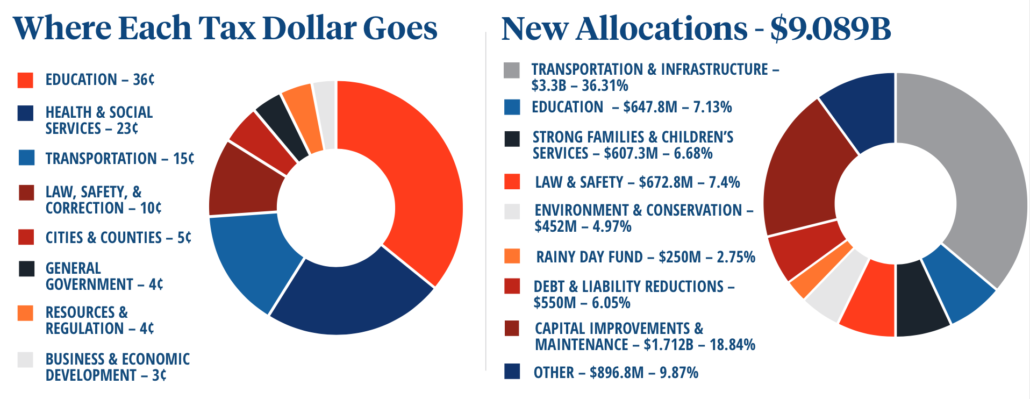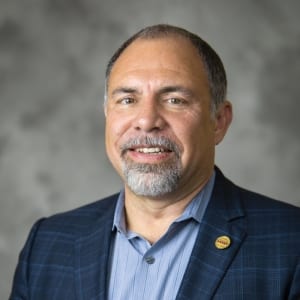Before a joint session of the 113th General Assembly, Gov. Bill Lee delivered his fifth State of the State Address on Monday, Feb. 6. In what was the longest of his career as governor, Gov. Lee delivered a robust plan that is perhaps one of the most ambitious we have seen from his administration. The speech lasted 55 minutes, and was just shy of 5,000 total words. As is tradition, it was interrupted a number of times by applause, even once by an outburst.
It is evident from the governor’s presentation, his team will be focusing on a large number of subject areas this legislative session. One of which is his proposal to establish what his administration calls a “nuclear fast track fund” to recruit companies to Tennessee that will specifically establish a nuclear development and nuclear manufacturing segment within the state. “No other state in the country comes close to Tennessee’s legacy, resources, and potential to be a leader in nuclear energy, and there is no long-term national strategy that doesn’t include nuclear energy. We cannot pass up this opportunity. Tennessee can, and should be a leader in nuclear energy for America,” said Gov. Lee. The proposal is slated to cost $50 million and will presumably be housed within economic and community development. TECA will provide more detailed information about the proposal soon.
Also of note, Gov. Lee will be placing significant emphasis on transportation and infrastructure modernization, allocating $3 billion. His administration will also be targeting economic and business tax relief, workforce, family programs, children services, teacher minimum wage, public safety, and conservation. He also proposed placing an additional $250 million in the state’s rainy day fund.
The total spending package will be the largest in state history, just over $55 billion. See below for a more detailed summary of Gov. Lee’s 2023 legislative package.

Notable Highlights from Gov. Lee’s FY23-24 Agenda
Transportation and Infrastructure Modernization
- $3 billion to the Transportation Modernization Fund to alleviate urban congestion and fund rural road projects across the state
- $750 million allocated to each of Tennessee’s four TDOT regions
- $300 million to expand the State Aid Program for local road projects
- Proposing new comprehensive legislation centering on Alternative Delivery Models, Public-Private Partnerships, Electric/Hybrid Vehicle Fees
Economic Opportunity and Tax Relief
- $288.3 million for a one-time three-month sales tax holiday on food from August 1 to October 31, 2023, providing tax relief for Tennessee families
- Beginning a three-year transition to Single Sales Factor for franchise and excise taxes to improve TN’s ability to compete for jobs and investment
- $64 million to simplify tax administration and conform with the federal bonus depreciation provisions of 2017 Tax Cuts & Jobs Act, allowing businesses to more quickly recover costs and further incentivize investment in Tennessee production
- $37.8 million for Small Business Excise Tax Relief, establishing a standard deduction from excise tax for up to $50,000 of reported net income, earning taxpayers a maximum of $3,250 in direct savings for Tennessee businesses
- $20.3 million for Small Business Franchise Tax Relief that exempts up to $500,000 of property from the franchise tax, giving small- and medium-sized businesses that own property in Tennessee up to $1,250 in tax savings on their annual franchise tax liability
- $7.9 million for Small Business Relief from the Business Gross Receipts Tax, increasing the filing threshold for business tax from $10,000 to $100,000 to ensure that only businesses with $100,000 of gross receipts or more will be subject to the business tax. This includes funding to hold local jurisdictions harmless.
- $7.3 million to establish a state paid family leave tax credit against franchise and excise tax for a two-year pilot period that will mirror the federal tax credit
Workforce
- $370.8 million to update outdated facilities in seven Tennessee College of Applied Technology campuses state-wide
- $386.2 million to invest in new buildings, expansions and improvements to sixteen current TCAT campuses
- $147.5 million to build six new TCATs to better serve more students across Tennessee
Family Initiatives
- $18.7 million to increase the income threshold for pregnant women and caregivers to expand access to TennCare Services
- $5.2 million to provide 12-month continuous TennCare eligibility for low-income children
- $4.7 million to permanently extend postpartum health coverage under TennCare
- $100 million for Crisis Pregnancy Provider Support Grants supporting crisis pregnancy centers statewide, improving access to healthcare and information for expecting mothers
- $10.25 million for Tennessee Fosters Hope grant funding to elevate high quality care for children and families impacted by foster care and adoption, allowing providers to expand their services to foster and adoptive families
- $27 million to expand programming for children with complex or special needs that face challenges being placed in a traditional foster or adoptive home by further developing the provider network and providing respite and long-term care
- $15 million to fund the Summer Youth Employment Program to connect youth and young adults ages 14 to 24 with career exploration opportunities and paid work experiences
Education
- $350 million in additional funding to local education agencies through Tennessee Investment in Student Achievement (TISA), including $125 M for teacher pay raises
- $60.8 million to extend summer learning camps and expand eligibility age from 4th grade to Kindergarten through 9th grade
- $10 million for summer bus transportation
- $20 million in School Safety Grants to enhance school security
- $29.7 million for the Tennessee School Safety Initiative, expanding staffing to place at least one Homeland Security Special Agent in each of the state’s 95 counties to provide threat assessments and collaborate with local law enforcement
- Expanding the Grow Your Own apprenticeship program to help solve teacher shortages, serving 600 new apprenticeship candidates per year
- Five percent salary pool increase for higher education employees to ensure they attract and retain the best employee base possible
Public Safety
- Adding 100 Highway Patrol troopers and related support staff and 25 Tennessee Bureau of Investigation Forensic Services staff
- $30 million addition to the Tennessee Law Enforcement Hiring, Training, and Recruitment Program (year 2)
- $50 million expansion of the Violent Crime Intervention Fund
- $357 million for network expansion of the Tennessee Advanced Communication Network (TACN) to transition remaining state agencies into TACN, improve coverage and provide infrastructure grants for local agencies to join TACN
- $10 million to support successful re-entry by expanding Evidence-Based Programming Grants in prisons and jails with a focus on mental health
Conservation and State Parks
- $66.5 million for the Natchez Trace Recreation Area, establishing a sportsman’s themed park with a lodge, cabins, campgrounds and a shooting range
- $28.3 million to create Scott’s Gulf State Park, a 9,000-acre park uniting Virgin Falls State Natural Area with surrounding nature areas into a single wilderness park
- $30 million to revitalize the Heritage Conservation Trust to support public-private partnerships through a matching grant program
- $15.4 million for trail infrastructure and development of the Cumberland Trail
- $10.3 million to address critical gaps along the Wolf River Greenway, a 26-mile paved trail meandering from the Mississippi River to Germantown
- $6.3 million to expand the Tweetsie Trail in Carter County, connecting four communities, two bike parks and a pedestrian bridge
- $70 million to TN Clean Initiative, cleaning up state Superfund sites, Oak Ridge and all 47 known dry cleaner sites
- $6.3 million for the Rural Brownfields Investment Act to revitalize 175 known brownfield sites, creating a new state-administered grant and technical support program for remediation and economic development of existing brownfields
- $4.7 million grant funding to improve local water quality by optimizing wastewater treatment plants, collaborating with agricultural partners to practice best management principles and supporting cities with reduction of nutrients in stormwater
Asset Management
- $1.7 billion to address capital improvements and maintenance, including Tennessee State Parks and TCATs
- Ensuring more than $2.8 billion of recurring revenue is allocated to one-time expenditures, allowing the return of these resources for review and budgeting next fiscal year





